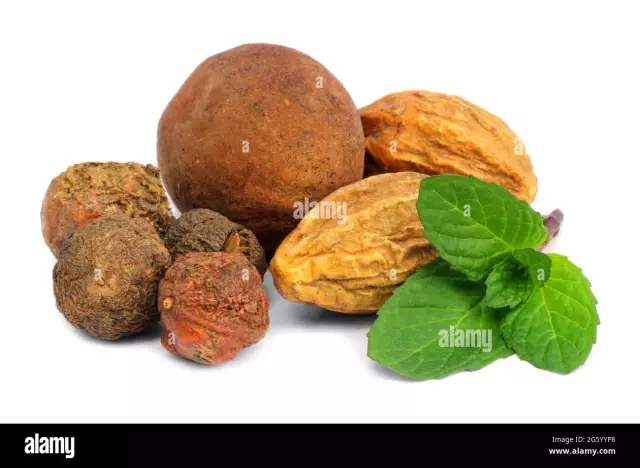- Author Rachel Wainwright [email protected].
- Public 2023-12-15 07:39.
- Last modified 2025-11-02 20:14.
Azimina

There is a wide variety of fruit plants in nature. Some of them are well known all over the world. Others are not very popular, but this does not make their fruits less tasty and healthy. These plants include three-lobed azimina, which has truly unique properties. In her honor, a special fruit festival is even held in the US state of Ohio near the city of Albany. What is this culture?
Azimina three-bladed
The fruit culture of the three-lobed azimine is a deciduous moisture-loving plant, whose homeland is North America. In nature, it is found only in the United States, where it grows in the form of shrubs along river banks and in shady forests on fairly moist soil. Some cultural forms of pawpaw have spread in other countries. In favorable conditions, the plant often looks like a tree, which reaches a height of 12-15 m. Despite the fact that the azimina is a plant of the subtropics, it has a high frost resistance.
This fruit tree can be a wonderful garden decoration. The pyramidal crown of the plant looks very interesting. It is formed by large glossy ovoid leaves up to 33 cm long and up to 12 cm wide, which appear after the flowers bloom. In this case, the lower surface of each leaf has a reddish brown tint.
During flowering, the azimine has a very decorative appearance due to the large bright colors of purple or red shades up to 6 cm in diameter. Each flower consists of only six large petals, which form a kind of lobes arranged in two rows, which made it possible to call the azimine three-lobed. A feature of the plant is a slight, but unpleasant smell of stale meat, which disappears when fruits appear.
Pawpaw fruit
Each flower of the three-lobed pistil is capable of tying several fruits, since it has from 2 to 9 pistils. However, the very early maturation of the stigma of the pistil excludes the possibility of self-pollination of the flower, so the plants require cross-pollination. Azimina fruits are berries of irregular, oblong-curved shape. They ripen in late September - early October and, depending on the variety, weigh from 60 g to 200 g.
The fruit is covered with a thin green skin, which later turns yellowish. Inside the fruit is a sweet, light pulp with a peculiar strawberry-pineapple aroma. Azimina tastes like a banana and a mango at the same time. The fruits of the plant are collected in compound fruits, in each of which there can be up to 9 of them at the same time.
In shape, the fruit has some similarities with bananas, which is why many call the azimina a banana tree. Similarities can be found in the composition of these plants, the main resources of which are pectin, ascorbic acid and trace elements such as potassium, calcium, magnesium and iron. Each fruit is rich in nutrients. The fruits of the paw, like other fruits, are used freshly harvested, and they are also used to prepare jam, jam, and jam.

Various parts of the plant have specific medicinal properties. For example, azimine seeds contain the alkaloid azimine, which is used in case of poisoning as an effective emetic that helps to remove toxins from the body. A decoction of young leaves is a good substitute for diuretics, and freshly squeezed juice has a noticeable anthelmintic effect. In addition, three-lobed azimine is capable of exerting a rather strong antitumor effect. The extract from its fruit strengthens the immune system.
The fruits of the pawpaw are the most valuable food product. In addition to their nutritional and medicinal properties, they give a person a pleasant taste sensation, contributing to the production of endorphins - the "hormone of joy". This allows us to see the banana tree in the azimine, which is a kind of substitute for a vine with well-known fruits.
YouTube video related to the article:
Found a mistake in the text? Select it and press Ctrl + Enter.






